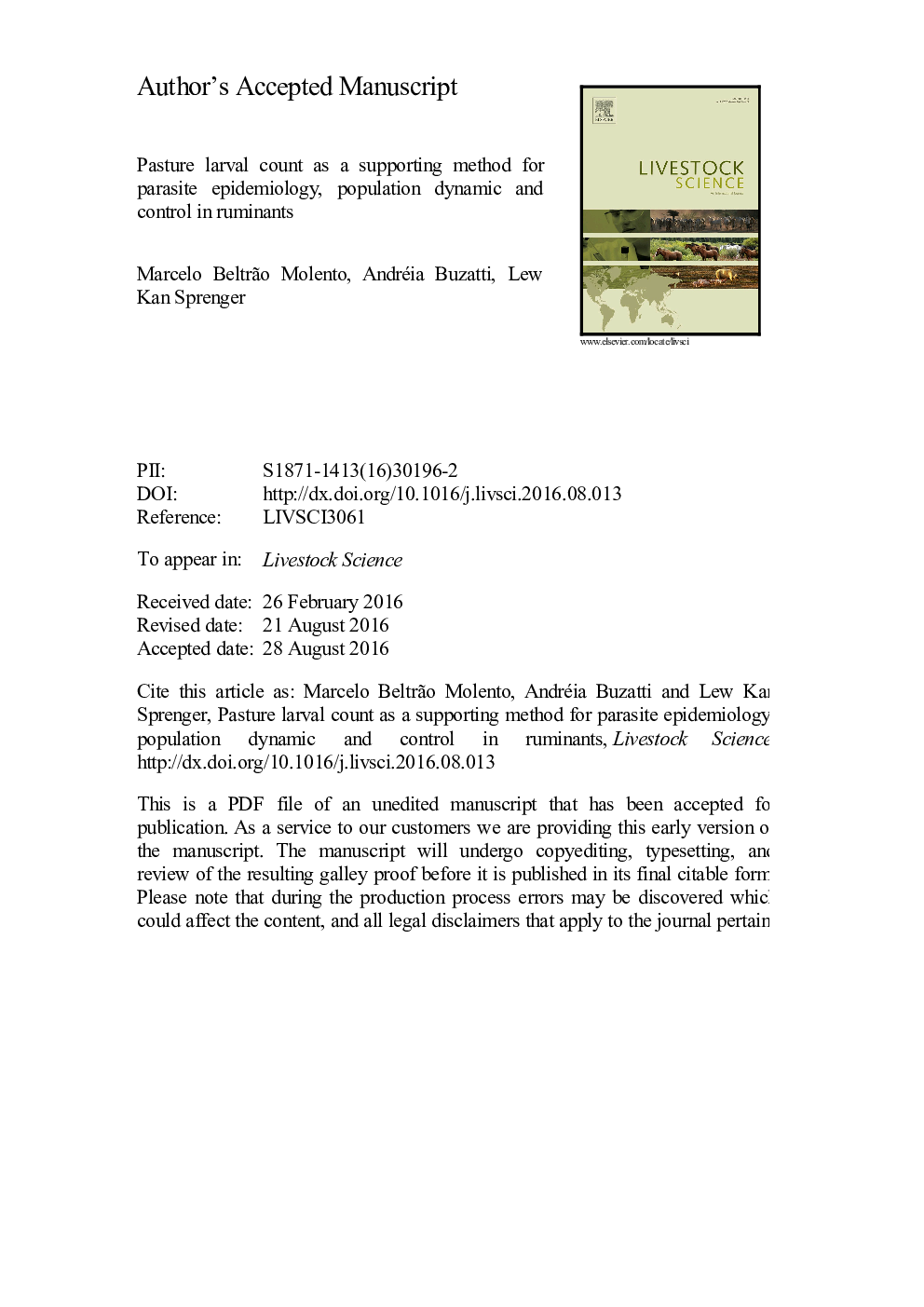| Article ID | Journal | Published Year | Pages | File Type |
|---|---|---|---|---|
| 8502131 | Livestock Science | 2016 | 30 Pages |
Abstract
The survival of the nematode parasite free-living stages depends mainly on environmental factors (i.e. rainfall, temperature and relative humidity). To complete its life cycle outside the host the parasite eliminated as eggs in the fecal material, develop to three larval stages before is ingested by the host. Although the presence of infective third stage larvae (L3) on pasture is of great importance for producers and researchers to determine the level of infectivity, the quantification of L3 on pasture is often neglected. Such condition can be determined by pasture larval count (PLC) from a target area. As anthelmintic resistance is widely overspread PLC technique supports population dynamic and epidemiological studies and can be used for measuring the success rate of livestock management strategies under different climatic conditions. The present review article brings together some of the field applications and difficulties to run and interpret this technique, encouraging its use as a diagnostic procedure.
Related Topics
Life Sciences
Agricultural and Biological Sciences
Animal Science and Zoology
Authors
Marcelo Beltrão Molento, Andréia Buzatti, Lew Kan Sprenger,
